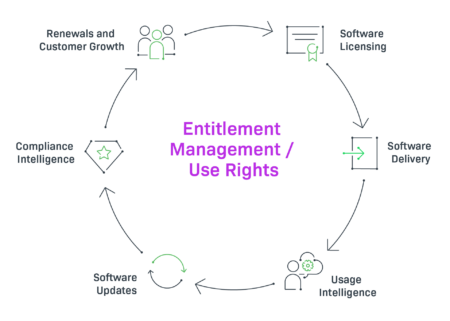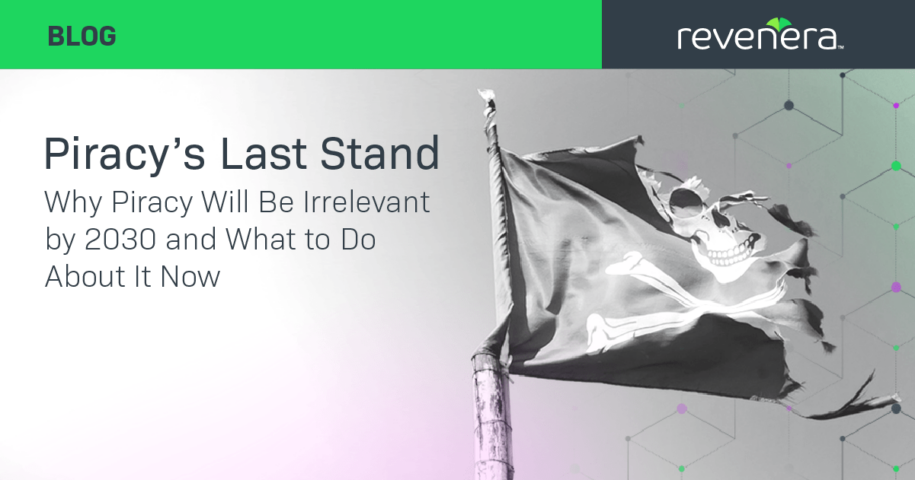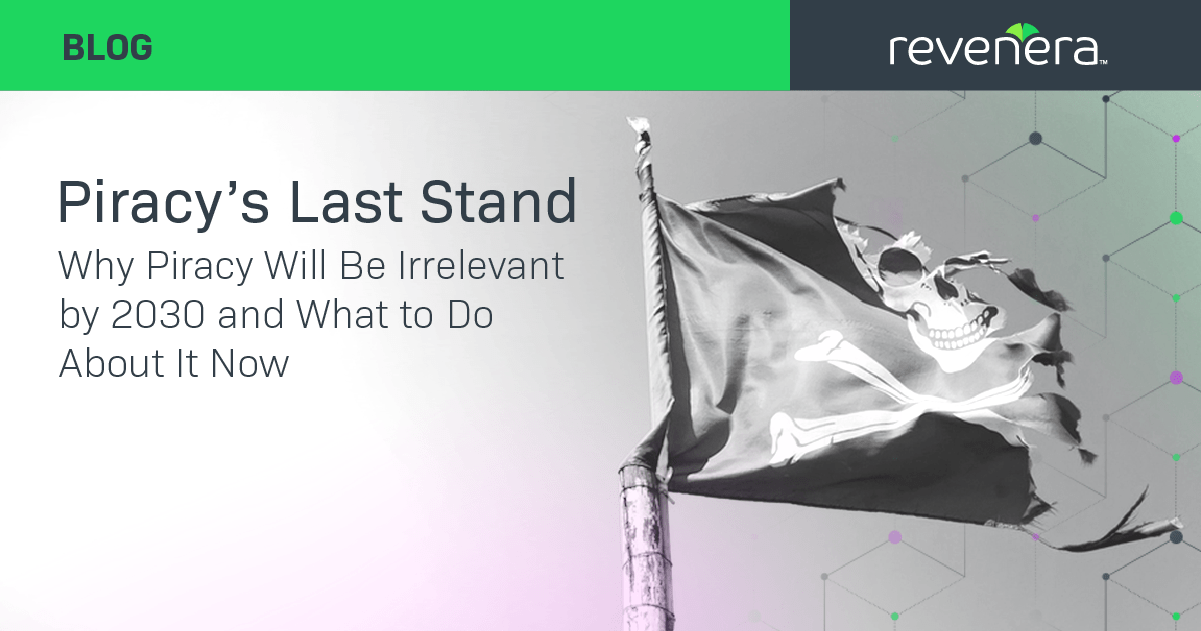Here’s a bold pronouncement: In less than 10 years, we won’t be talking about how to stop enterprise software piracy much anymore. Certain regions will continue to see piracy, but I predict that a downward trend in piracy globally will only accelerate. In 2013, 43% of the software installed on computers around the globe wasn’t properly licensed, according to the BSA’s Global Software Survey. That dipped to 39% in 2015 and 37% in 2018, the most recent study.
It’s not to say that piracy will go the way of the dodo. It’s just that it’ll hit a point at which a strategy wholly geared toward targeting pirated use will yield diminishing returns compared to a more holistic approach to monetization. Why? Because the cloud has dealt a major blow to the piracy business – and requires that you evolve your strategy toward piracy in a way that will best support the new realities cloud technologies have created going forward.
Piracy is a business. The greater the gap between what customers are willing to pay for software and the value they receive (or perceive they will) from it, the more pirated use occurs to close that gap. But cloud technology and advancements made possible because of the cloud will reduce that market by more closely aligning price with value. That begins to erode the ability of piracy to take hold, and, by extension, lessens the value of hiring vendors or implementing software focused solely on a short-term view of piracy. Your approach and view will need to evolve – and you will need data on software usage (perhaps gained through tracking unlicensed use at first) that will help you continue to price, package and update your software in a way that tightly aligns price with value. Taking this more holistic view of software monetization will yield greater returns and customer lifetime value in both the short and long term.

A holistic solution for Software Monetization and Usage Analytics
Why The Cloud Will Eventually Put Piracy Out of Business
Confidence in cloud technologies is extremely high, as evidenced by customers’ 2021 IT budgets. Enterprises expect to spend more than ever on cloud projects, according to Flexera’s 2021 State of Cloud Computing report, with 36% of those surveyed saying annual spend would exceed $12 million. That number was 20% in 2020. Some 60% named moving more workloads to the cloud as a top initiative and nearly 40% will move on-premise applications to SaaS ones.
Our 2020 Monetization Monitor report on Monetization Models and Pricing revealed that SaaS is expected to be the fastest growing deployment model, with 67% of survey respondents indicating an anticipated increased use of the model. But while the trend toward SaaS is clear, almost half (49%) of companies still use on-premises software as the model for more than half of product lines. Software suppliers need monetization partners who can help them through all phases of their product and customer journeys.
As businesses lean more on the cloud, they’re much more likely to take advantage of the modular access to functionality it is capable of providing. Time was, an organization needed to purchase a license to a massive application, but some users may only have needed a slice of that functionality. It wasn’t cost effective to buy another seat for the CAD program, another full license to a program for marketing tools or even another copy of Microsoft Office. It’s unsurprising that it proved much more attractive to gain access to that slice via another avenue – which pirates gained such a level of sophistication in providing that it looked to be legitimate (fortunately, more than 80% of pirates in mature markets are inclined to pay once they are alerted that they’re using pirated software). Or, organizations simply fell out of usage rights granted by contracts, and were often hit with steep charges when their vendor conducted a software audit.
The cloud provides the ability for vendors to deliver functionality on a modular basis. Now, customers can access what they need in a way that more closely aligns needs and value. That discourages those who (especially unwittingly) illegally accessed the software – because it’s easy to search for tools with really targeted functionality that do exactly what you need them to do, and only that. And, of course, there are more options to pick from because the cloud has democratized so much of software development and delivery.
But the best part is that customers can now pay only for what they need. The elasticity of the cloud allows for very granular delivery of applications and pricing models associated with them – as services can be provisioned when the demand is there, and everything can be continually measured to fine tune and more closely align price and value. This in turn is driving an evolution in pricing models. Even outcome based models, while still in their infancy, are showing consistent growth, with 23% of respondents to our 2020 Monetization Monitor survey saying they use them “extensively” (more than 50% usage), up from 19% in 2019. The more closely aligned price and value become, the more downward pressure is put on piracy.
As long as there’s a market, piracy will survive. Our most recent analysis shows a $17.1 billion global opportunity. Piracy is climbing in certain regions – with China, Russia and the Ukraine leading the way. But the cloud will continue to push its incidence down especially in developed and mature markets – slowly now, but accelerating every year. So why would we approach piracy by doubling down on measures to prevent piracy and ignore broader issues of monetization?
In the realities of our environment, we need to shift our focus and instead learn more from piracy than simply how to recover revenue. That data can tell us a lot about the best ways to build and monetize products that align price and value.
But What If We’re Not in The Cloud?
Perhaps you don’t deliver your software in the cloud, or your business model is transitioning at a slower pace that makes sense for you and your customers. Or, you’re among the vendors that it makes sense to continue to deliver new software, or provide updates to existing applications, for on-premise use.
Traditional avenues of piracy may still apply to the bulk of your product set. There are likely still significant gains to be had from going after that revenue, and you’ve implemented technology to help you find and recover that revenue. But there’s more to be gleaned from the data than simply where the pirates are and how to recover the money.
Think about data not only in terms of illegal usage – but what the usage tells you about that avenue. Why are people pirating your software? Are price and value not aligned? Are free trial users not willing to pay after their trial period is up? Is your software packaged in a way that makes sense for how people work? Are users hitting snags with install – can you ease delivery in some way?
Pirates can tell you a lot about your software – and all of that data can be used to better package, price, upgrade, plan and deliver your software. And especially in geographies in which the culture or the regulations present barriers to collecting usage data, tracking usage through piracy provides a viable way to learn about use and make sure pricing aligns with it.
Let’s consider software licensing models for instance. Right now, perpetual licensing still remains a dominant monetization model for many businesses. Our 2020 Monetization Monitor report showed that companies that use one model extensively (for more than 50% of their business), subscription is leading (37%), followed by perpetual (34%). For companies that mainly rely on just one model for more than 70% of their business, perpetual is still leading (23%), with subscription taking a close second (20%).
Regardless of what monetization model they use, those who understand usage are better at pricing their products, according to data from the Revenera Monetization Monitor: Usage Management & Insights. Some 33% of suppliers surveyed said the biggest hurdle for aligning price with customer value is insufficient insights into usage data.
Pursuing a Sustainable Piracy Strategy
When you have technology and a strategy that allows you to quickly target where your software is being misused, you have already begun to implement a data-centric culture that creates a springboard to look at how it’s being used.
Making the jump from pinpointing usage to analyzing it has two major benefits. First, you begin to move the organization away from a piracy program that is purely punitive in focus, and more toward one that is a partnership with customers and builds value long-term. Industry leaders have put programs, initiatives and tools in place to make the audit less of an event-triggered, one-time thing and a much more collaborative process that focuses on customer value. This includes using analytics to set specific thresholds that automate the monitoring of usage. This helps proactively notify customers when things are not in compliance and provide a data-based heads up on where there could be areas of concern.
It also positions the organization to leverage that data to actually inform monetization strategies and product decisions, both of which reinforce one another to prevent piracy in the first place.
Usage data and collection touch on so many areas of figuring out what the next steps need to be when it comes to piracy and unauthorized usage. Revenera software, for instance, enables the vendor to set rules on how customers are allowed to use their software – by seat, by named user and more. This functionality not only makes it easy to see whether they’re adhering to entitlements, but also to begin to draw inferences about how and why they might be straying from defined usage parameters. In such a way, enforcement doesn’t just mean bringing the entitlement into compliance, but how the vendor can monetize in a way that allows it to “build that customer up versus just trying to cut them off,” Revenera Solution Architect Eric Jensen said on a recent panel, “Software Pricing and Business Model Trends 2021.”
“It’s much better to say, ‘hey, they find value in doing this and using the software, let’s encourage them to actually pay for it, versus just trying to cut them off,’” Jensen said.
Get on The Path to Compliance and Customer Value
Leading vendors don’t just think about software piracy. They think about how piracy fits into and helps inform your overall software monetization and product development strategy. A piracy strategy that is driven by data helps the organization recover revenue from piracy in the short term. When combined with holistic software monetization and product usage analytics, you are in a position to monetize what matters and build long-term customer value that will ultimately lead piracy into obscurity.




